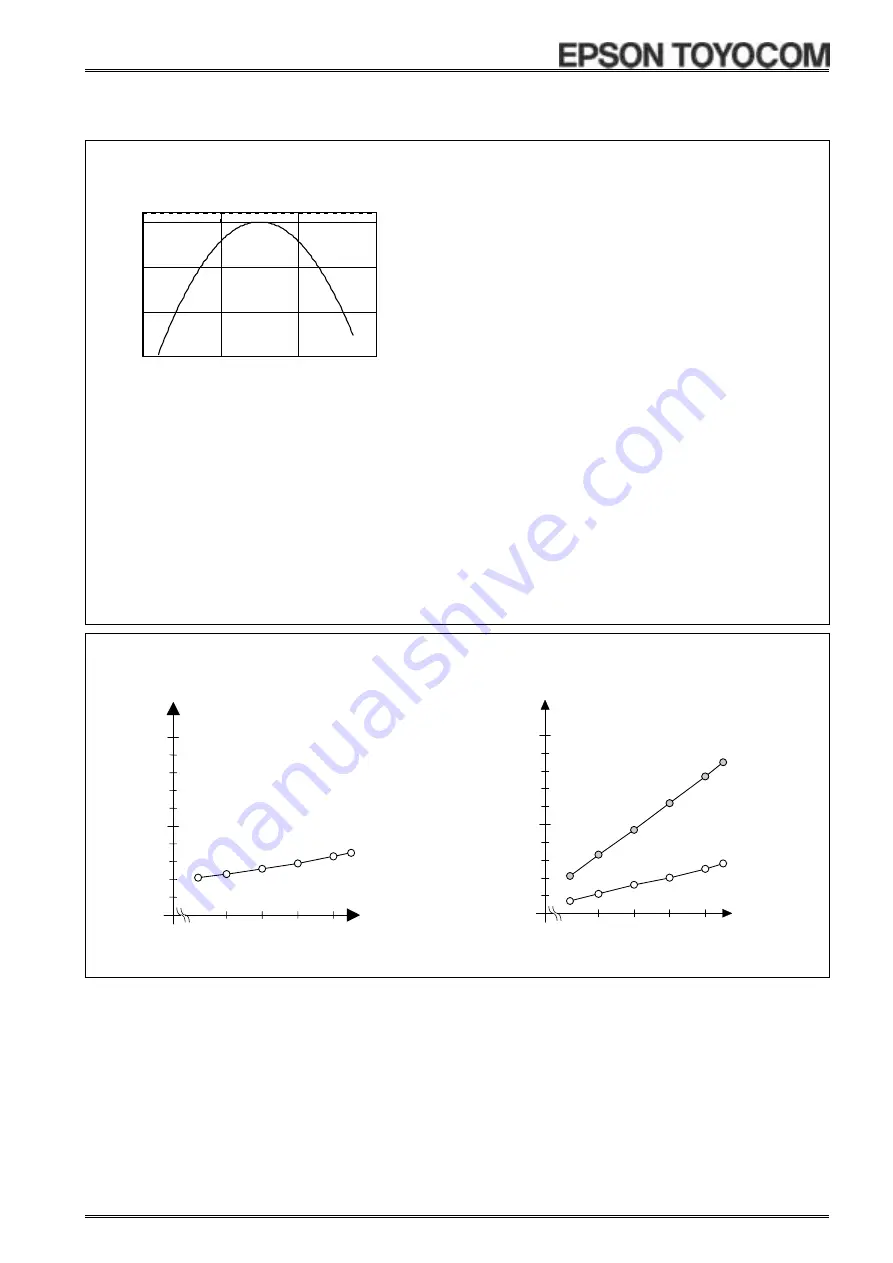
RX
−
8564
LC
Page
−
7
ETM12E-01
9. Reference data
(1)
Example of frequency and temperature characteristics
-150
-100
-50
0
-50
0
50
100
Temperature [
°
C]
F
requenc
y
∆
f
T
×
10
-6
θ
T
= +25
°
C Typ.
α
= -0.035
×
10
-6
Typ.
[
Finding the frequency stability
]
1.
Frequency and temperature characteristics can be
approximated using the following equations.
∆
f
T
=
α
(
θ
T
− θ
X
)
2
!
∆
f
T
: Frequency deviation in any temperature
!
α
[
1
/
°
C
2
]
: Coefficient of secondary temperature
(
−
0.035
±
0.005
)
×
10
−
6
/
°
C
2
!
θ
T
[
°
C
]
:
Ultimate
temperature
(
+25
±
5
°
C
)
!
θ
X
[
°
C
]
:
Any
temperature
2.
To determine overall clock accuracy, add the
frequency precision and voltage characteristics.
∆
f/f
=
∆
f/fo
+
∆
f
T
+
∆
f
V
!
∆
f/f
: Clock accuracy (stable frequency)
in any temperature and voltage.
!
∆
f/fo
: Frequency precision
!
∆
f
T
: Frequency deviation in any temperature.
!
∆
f
V
: Frequency deviation in any voltage.
3.
How to find the date difference
Date Difference =
∆
f/f
×
86400(Sec)
∗
For example:
∆
f/f = 11.574
×
10
-6
is an error of
approximately 1 second/day.
(2) Current and voltage consumption characteristics
(2-1) Current consumption when non-accessed (i)
when CLKOUT=OFF
I
DD
[
µ
A]
2
Cu
rre
nt
c
ons
um
p
ti
o
n [
µ
A]
Supply Voltage V
DD
[V]
1.0
0.5
3
4
5
Condition :
f
SCL
=0 Hz, Ta=+25
°
C, CLKOUT=OFF
(2-2) Current consumption when non-accessed (ii)
when CLKOUT=32.768kHz
CL=30 pF
2
10
5
3
4
5
Condition :
f
SCL
=0 Hz, Ta=+25
°
C, CLKOUT=32.768 kHz
I
DD
32K[
µ
A]
CL=0 pF
C
u
rr
e
n
t c
o
n
s
um
pt
io
n
[
µ
A]
Supply Voltage V
DD
[V]











































